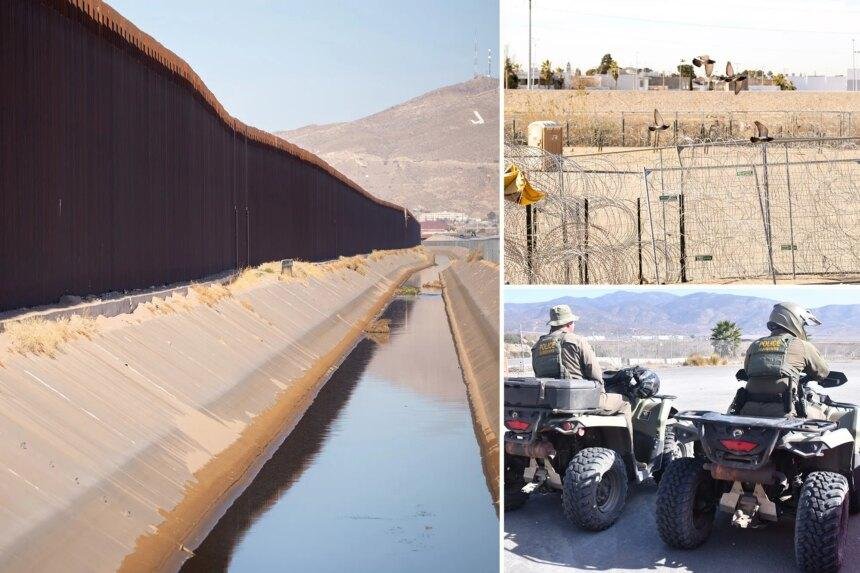Illegal Border Crossings Reach Historic Low: A Shift in U.S. Immigration Dynamics
In a significant development for U.S. immigration policy, illegal crossings along the U.S.-Mexico border have plummeted to their lowest levels in 55 years. The Department of Homeland Security (DHS) and U.S. Customs and Border Protection (CBP) reported that a total of 237,565 migrants were apprehended during the fiscal year 2025, which spans from October 1, 2024, to September 30, 2025. This figure marks a dramatic decline compared to previous years and raises questions about the evolving landscape of immigration enforcement in the United States.
Historical Context of Border Crossings
The apprehension numbers for fiscal year 2025 are the lowest since 1970, when authorities recorded 201,780 apprehensions. This stark reduction is particularly noteworthy given that the average number of apprehensions over the last four fiscal years was approximately 1.86 million. The current figures suggest a significant shift in the dynamics of border security and immigration enforcement, reflecting broader changes in policy and enforcement strategies.
DHS Secretary Kristi Noem emphasized the achievement, stating, “We have had the most secure border in American history, and our end-of-year numbers prove it.” She attributed the success to the policies implemented during the Trump administration, which she claims empowered law enforcement to effectively manage border security.
The Biden Administration’s Impact
Interestingly, the majority of apprehensions in fiscal year 2025 occurred during the final months of the Biden administration. Between October 2024 and January 2025, border agents apprehended 172,026 individuals, accounting for 72% of the total apprehensions for the year. This period was characterized by a surge in illegal crossings, with an average of about 2.4 million migrants entering the country illegally each year from 2021 to 2024.
The Biden administration faced significant challenges in managing the border crisis, with critics arguing that its policies contributed to the influx of migrants. In contrast, the Trump administration’s approach, which included deploying troops to the southern border and suspending asylum claims, has been credited by some for the current decline in illegal crossings.
A Closer Look at Recent Trends
The data reveals a notable trend in apprehensions over the past year. In September 2025, apprehensions totaled approximately 8,400, a slight increase from 6,300 in August and a significant rise from the record-low monthly total of 4,600 in July. However, for the fifth consecutive month, authorities reported that zero migrants were released into the U.S. during September, a stark contrast to the 9,144 migrants released in September 2024 under the Biden administration.
This shift in policy reflects a more stringent approach to immigration enforcement, with the Trump administration focusing on detaining and deporting illegal migrants. According to DHS data, Immigration and Customs Enforcement (ICE) is on track to deport 600,000 illegal migrants this year, while more than 2 million illegal migrants have voluntarily left the country since January.
The Broader Implications of Policy Changes
The decline in illegal border crossings raises important questions about the future of U.S. immigration policy. The historical context of border enforcement reveals a complex interplay between political leadership, public sentiment, and international factors driving migration. The current administration’s policies may have contributed to a temporary reduction in illegal crossings, but the long-term effectiveness of these measures remains to be seen.
Moreover, the implications of these changes extend beyond mere statistics. The humanitarian aspects of immigration, including the treatment of migrants and the conditions they face, are critical considerations that must be addressed. As the U.S. grapples with its immigration challenges, the balance between security and compassion will continue to be a contentious issue.
Conclusion
The recent data indicating a historic low in illegal border crossings underscores a pivotal moment in U.S. immigration policy. While the figures may reflect the success of current enforcement strategies, they also highlight the complexities and challenges that lie ahead. As the nation navigates this evolving landscape, the interplay between policy, enforcement, and humanitarian considerations will shape the future of immigration in the United States. The coming months will be crucial in determining whether these trends are sustainable or if new challenges will emerge, necessitating a reevaluation of the nation’s approach to border security and immigration reform.









